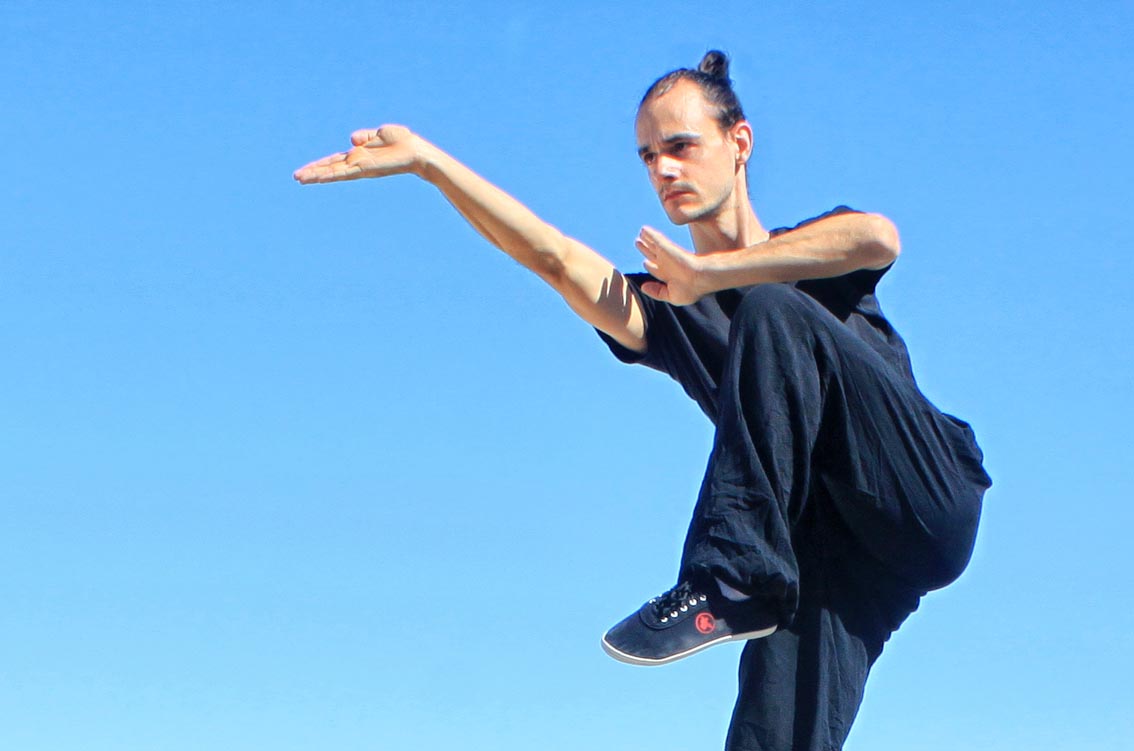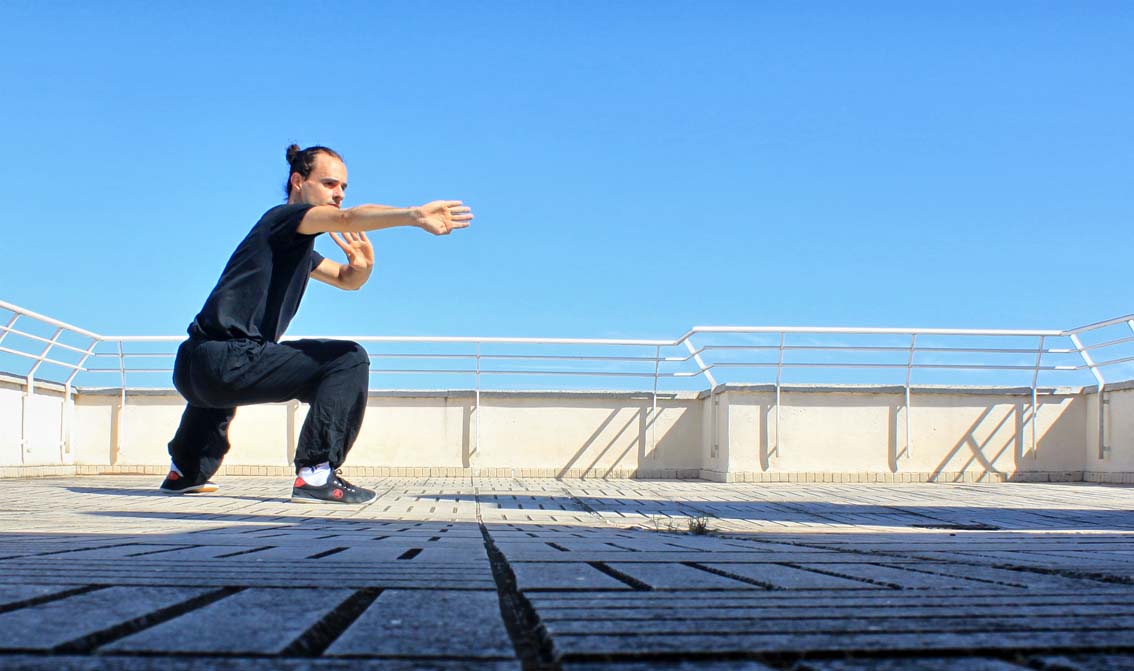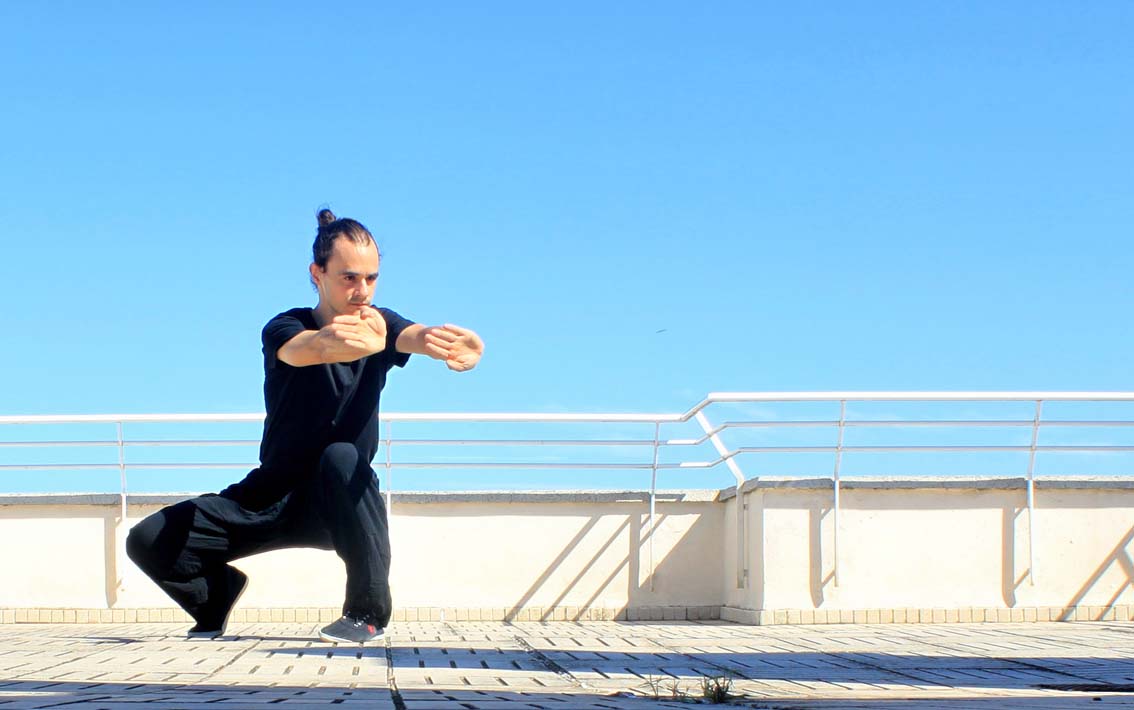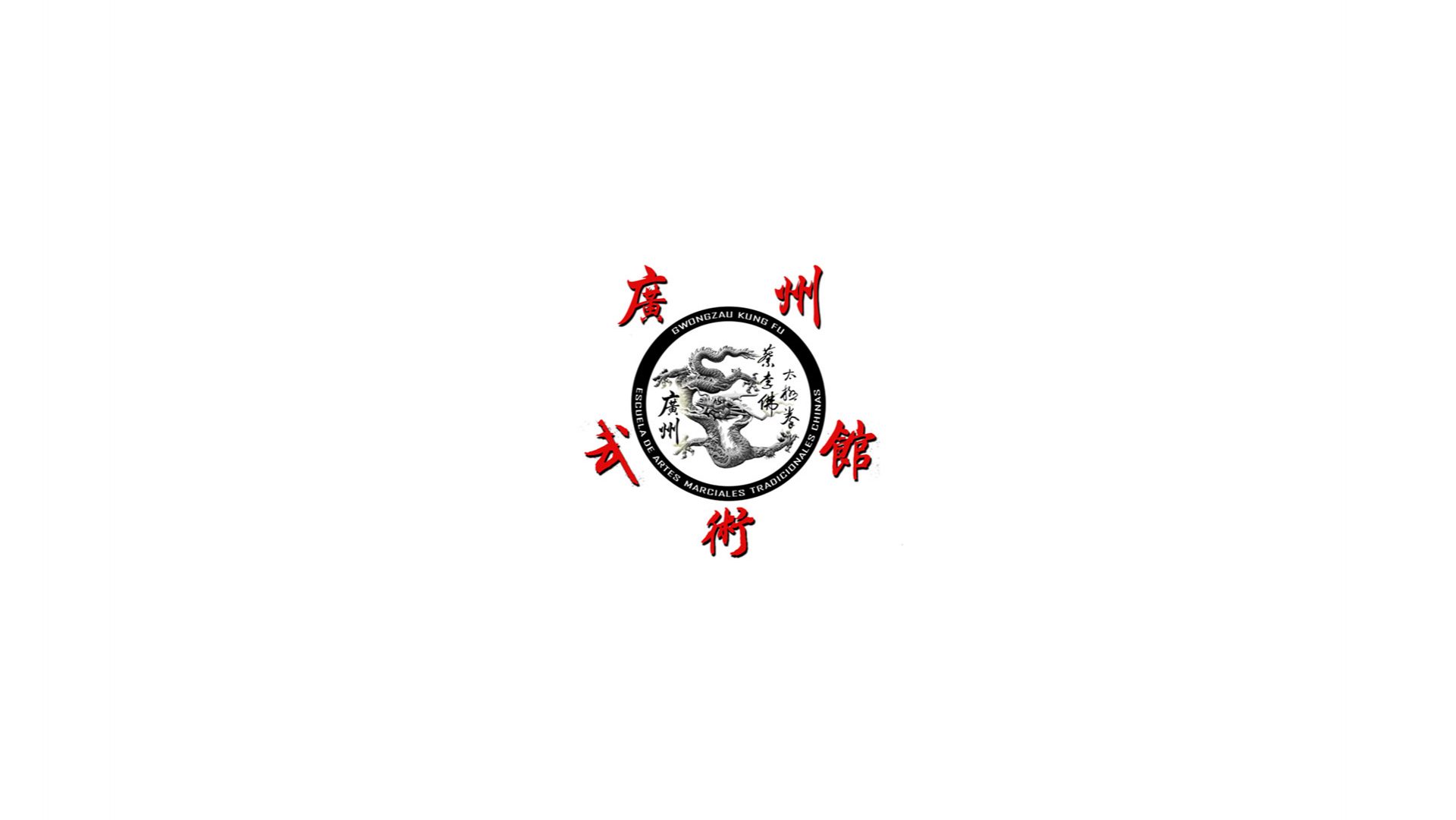Within the Choy Li Fut 蔡李佛 system we have a myriad of martial techniques of all kinds: fist techniques, kicks, qín ná 擒拿, sweeps... In addition, it is remarkable a wide variety of strikes with open hand or palm techniques.

Gong-Jeung 鋼掌
Within the style, these techniques come to us from Chan Heung's 陳享 first master and uncle, Chan Yuen-Woo 陳遠護, who was an expert in the Fut Ga Kuen 佛家拳 system or Buddha's Palm style, and who in turn had learned it of a monk named Duk Jeong. This system originates from the Southern Shàolín Temple 少林寺 in Fukien 福建, because of this it is sometimes known as Siu Lum Fut Ga Kuen (少林 佛家拳), or Boxing of the Southern Shàolín Buddhist Family.
Palm represents control over force.
The palm represents control over force. The palms are faster than the fists, and also more dangerous. A fist can break bones, but a palm strike can cause great internal damage. On one occasion, Grand Master Chan Yiu-Chi 陳耀墀 ended a confrontation with a single palm strike on his adversary, Master Gum Zai, who had come to his house to challenge him. Gum Zai died after a week of internal damage, despite the fact that Chan Yiu-Chi, who had repeatedly refused to confront him and, as a doctor, had offered him to come to his house to treat his wounds. But Gum Zai, out of pride, never showed up again, and this episode caused a great sense of guilt in Chan Yiu-Chi for much of his life.
Among the palm techniques we use in the style, there are some that use the base of the palm to hit, others use the edge of the hand, and others use the fingers. There are also blocks with the extended palm that use different areas of the forearm.
On the other hand, many of the fist strikes have their equivalent in the form of palm: the Gwa-Chui 掛搥 becomes Gwa-Jeung 掛掌, the Sou-Chui 掃搥 becomes Sou-Jeung 掃掌, etc. (although these strikes are charasteristic of the Gong Zau 江州 lineage of Choy Li Fut).
Let's see some of them:
- Fut-Jeung 佛掌 (Buddha's palm): It is perhaps the most characteristic of all. It is a straight blow with the edge of the hand, and the fingers extended upwards.
- Gong-Jeung 钢掌 (steel palm): A blow forward and upward with the base of the palm and the fingers extended outwards.
- Pau-Jeung 抛掌: Similar to Gong-Jeung, but this time the blow goes upwards more than forward, practically vertically and at a shorter distance.
- Tsang-Jeung 撑掌 (penetrating palm) or Ding-Jeung 釘掌 (nail-palm): Downward strike with the base of the palm and fingers extended inwards; normally it goes to chest height.

Tsang-Jeung 撑掌
- Kwa-Jeung 掛掌 (hanging palm): Blow or block in downward direction using the forearm.
- Kap-Jeung 級掌 (covering palm): Blow from top to bottom at the height of the head using the base of the palm; fingers upwards.
- Dat-Jeung 挞掌 (whip palm): Horizontal blow using the back of the wrist or forearm, which can be directed to the trunk or head.
- Pek-Jeung 披掌 (seal or hammer palm): Downward strike with the edge of the hand.
- Sao-Jeung 捎掌 (sweeping palm): Horizontal hit, usually at the height of the head, which uses the forearm or the base of the thumb to hit. The thumb should be tucked in under the palm to avoid breaking on impact.
- Dan-Lan 單攔: Horizontal hit with the edge of the hand.

Dan-Lan 單攔
- Yoeng-Kiu 揚橋: Blocking at head height using the forearm; the palm looks towards us; fingers upwards.
- Hop-Sup 合十 or Hop-Jeung 合掌 (palm of "the ten together"): Strike with both hands joined, sticking the tips of the fingers.
- Pit-Jeung or Pit-Kiu 撇橋: Falling block with the edge of the forearm.
- Dip-Jeung 蝶掌 (butterfly palms): It is a block and a dislocation at the same time. One hand engages the opponent's wrist by pulling it to one side of the body, and the other hand makes a lever on his elbow.
- Soeng-Tui-Jeung 雙推掌 (double pushing palms): A hit with the base of both palms that pushes the opponent forward.
- Other palm techniques: We could mention many other techniques that use the palm, such as Tyut-Jeung 脱掌, Sang-Kiu 生橋,Kau-Zeung 扣掌, etc.

Soeng-Tui-Jeung 雙推掌

3 thoughts on “Palm Strikes in Choy Li Fut”
Thank you
Great content. As a Choy Lay Fut practitioner, I have some questions about the names of the strikes.
From what I know and what I could see in the text, the first name of the technique refers to the type of strike while the last refers to the part of the body used.
If this idea is correct, Joeung would be a palm, just as Choy is a punch. In this case, what would Kiu be?
If you have any material that better explains the strikes and their names, I would like to read it. I find it very interesting to use the original names of the strikes, I know several Choy Lay Fut strikes but often I don’t know the name of each strike.
Hi Bruno,
Thanks for your appretiation.
What you say is correct. However, chui 捶 (or choy, as you name it) is not the fist itself, but a verb (to beat), which refers to a fist strike. The literal meaning of kiu 橋 is “bridge”, but it is a common term in Southern Chinese martial arts that refers to the forearm.
For now, I didn`t upload any other material regarding strike names, although I have tons of notes about techniques; if one day I have the time to structure them properly I will consider to post something.
All the best,
Juan